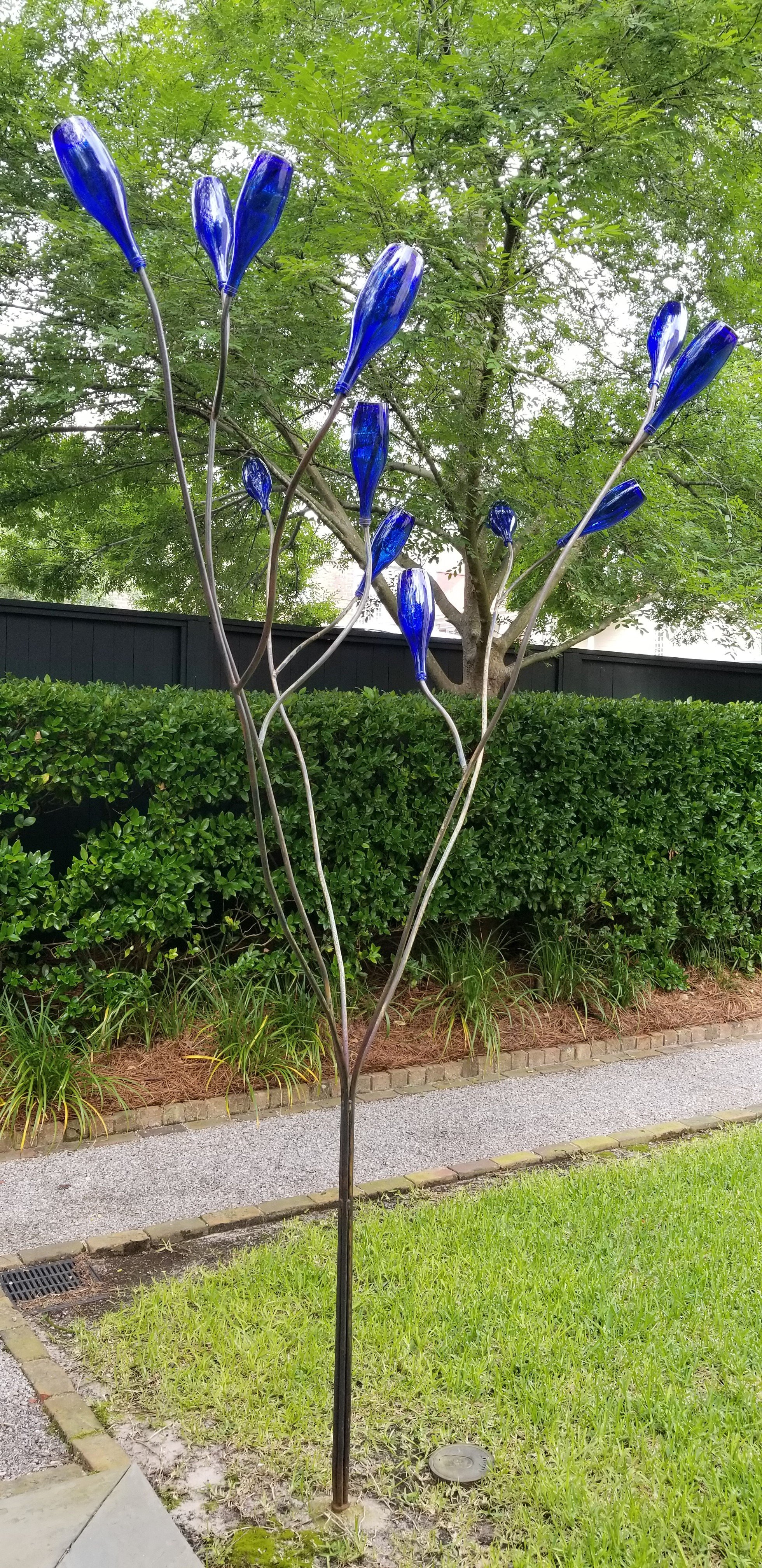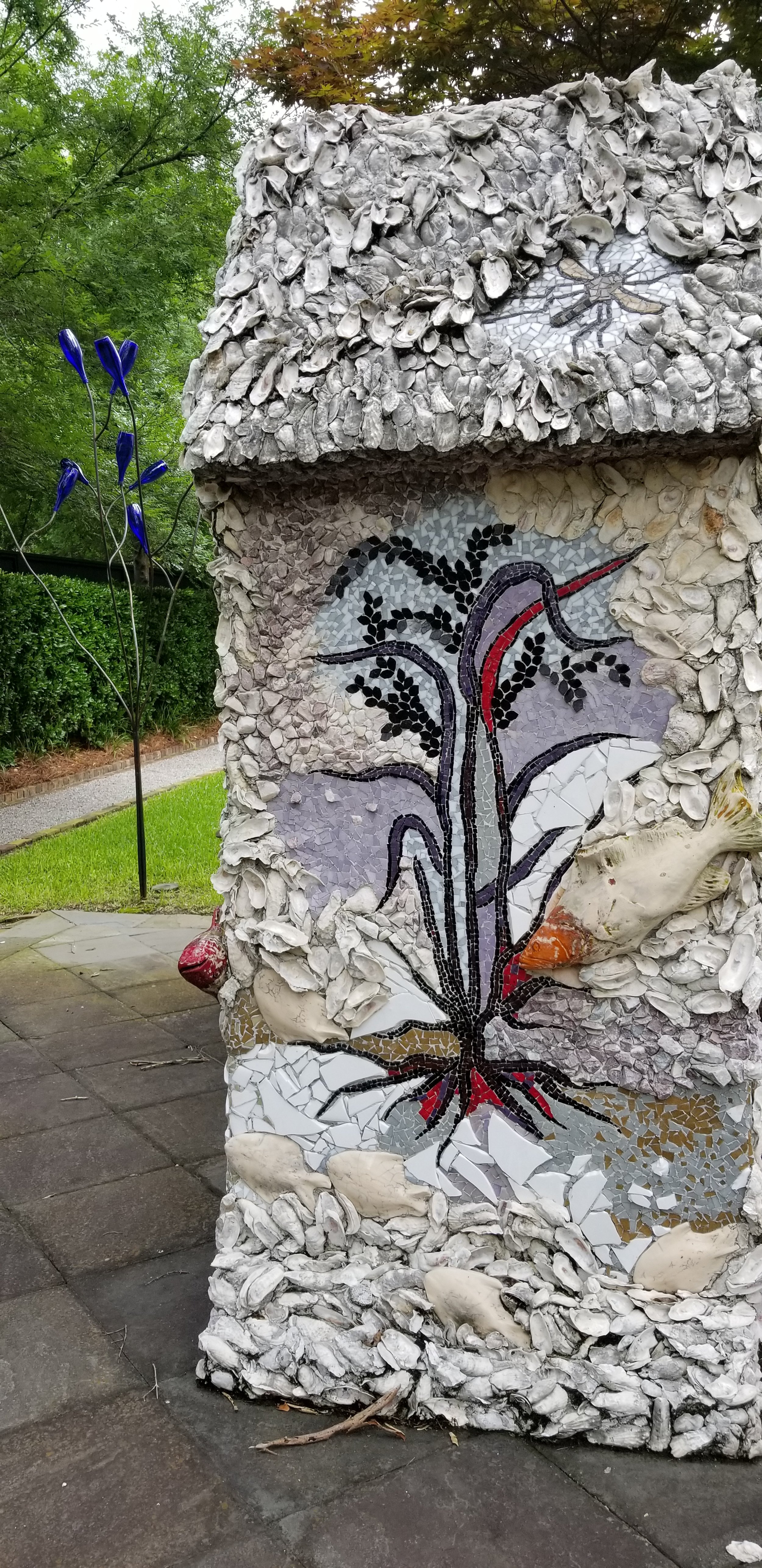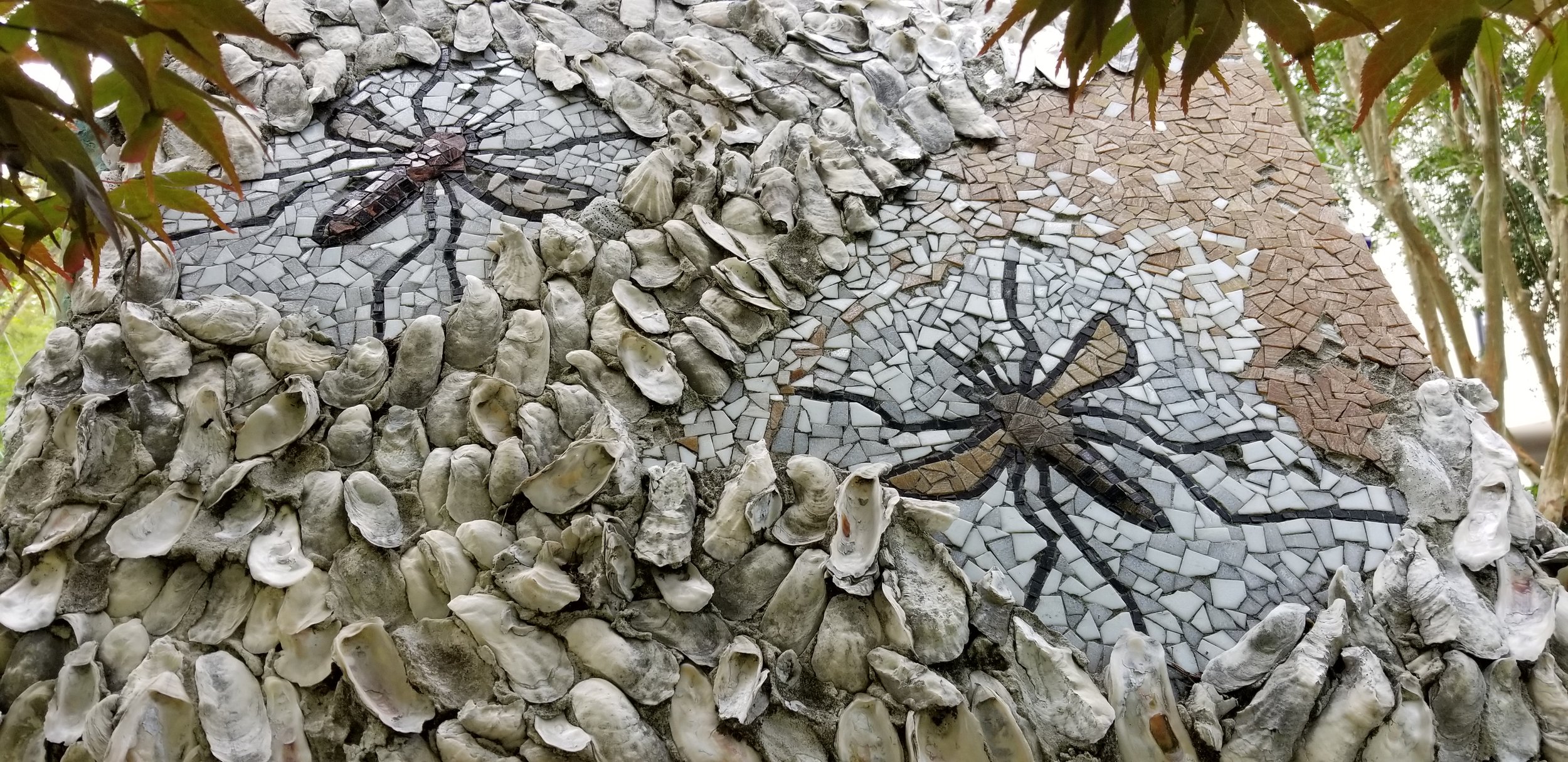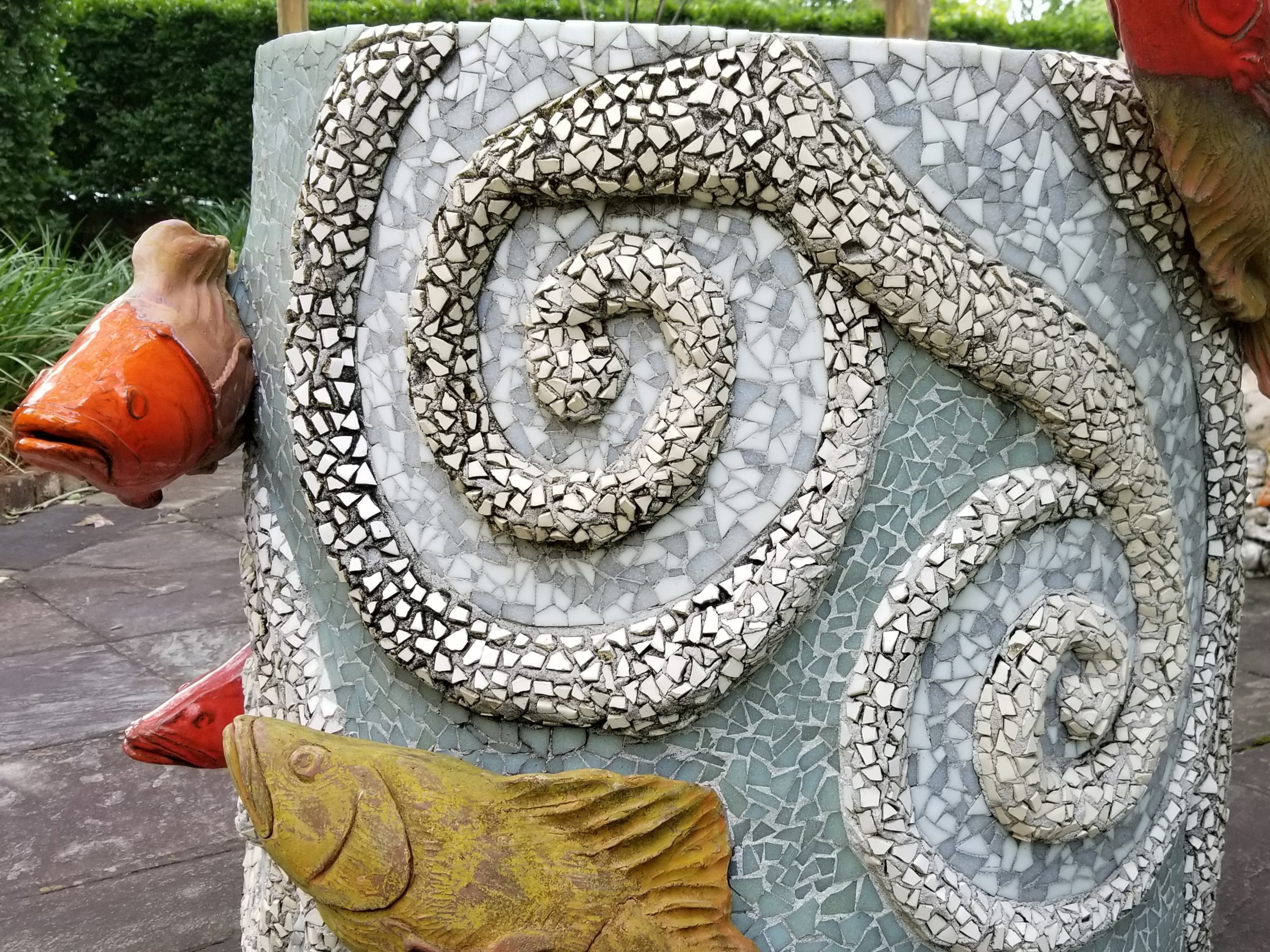The Garden at 14 George Street
Gardenias
Two things about gardens in Charelston, South Carolina. Stately, organized, and beautiful gardens are tucked away behind iron gates that shelter gardenias, magnolias, azaleas, and camellias among other green and lovely plants. You will also often see the shiny blue of blue bottle trees, a tradition thought to come from enslaved people of West Africa. Both aspects combined in the garden surrounding the historic Middleton-Pinckney house in downtown Charleston. The shiny blue of blue bottle trees first attracted my attention. Blue is the color of protection against the invisible and evil—blue bottles serve as a distraction and sometimes a trap for evil spirits surrounding a house or garden and are often seen hanging upside-down in a crepe myrtle tree.
In a blog from Smithsonian Gardens, I found this quote: “Writer Eudora Welty (1909-2001) took the bottle tree from the landscape onto the pages of American literature in her short story “Livvie,” giving her work a distinct sense of place in the American south. As she described the scene,
Coming around up the path from the deep cut of the Natchez Trace below was a line of bare crape-myrtle trees with every branch of them ending in a colored bottle, green or blue. There was no word that fell from Solomon’s lips to say what they were for, but Livvie knew that there could be a spell put in trees, and she was familiar from the time she was born with the way bottle trees kept evil spirits from coming into the house…Solomon had made the bottle trees with his own hands over the nine years, in labor amounting to about a tree a year, and without a sign that he had any uneasiness in his heart, for he took as much pride in his precautions against spirits coming in the house as he took in the house…
This story, as Welty said in a 1987 interview, was inspired by bottle trees she saw and photographed in rural Mississippi during the 1930s and ’40s: ‘it was the place, really. And it was the bottle tree that made me write it.’”
Walking past the blue bottle trees, I saw a sculptural installation entitled Rice, Rattlesnakes, and Rainwater that rendered in tabby shell, ceramic, glass, and terracotta the experiences of this coastal landscape. Intricate sculptures of Jackson Jarvis's installation depict fish and mosquitoes among the rice and rattlesnakes, denizens of the wet fields of the low country. Text on the plaque accompanying the installation describes the exhibit: “Rice, Rattlesnakes, and Rainwater is a sculptural collection that explores the connections between Charleston's natural environment and its rich African-American history. The project consists of tabby (oyster-shell and concrete) houses and barrels covered with imagery relating to the African-American experience of the coastal landscape rendered in ceramic, glass, mosaic, and terracotta. The rain barrels suggest the necessity of collecting fresh water on islands surrounded by the brackish estuaries. They are embellished with glazed ceramic fish cast from species found in coastal waters, including red snapper, red hind, pompano, and flounder; some of these fish reappear on the houses, which are meant to evoke modest vernacular dwellings. The houses are encrusted with the shells of oysters, another local food; they also carry the mosaic image of the rice plant. People from West Africa were especially prized because of their familiarity with rice cultivation; their knowledge was ironically a cause of their enslavement.”
Four years ago in the spring, I first visited this site when the sculptures drew me in, and I spent a long time going around each pillar finding the mosquitoes and fish and other symbols. Then I wandered on to find a beautiful secret garden with a name—Mary Ramsey Secret Garden—with a rusty bench, an old lichen-encrusted wall with a fountain trickling water and, the crowning glory, a gorgeous old gardenia bush with lush drooping blossoms. The peace, the sound of water, and fragrance of gardenia and the reminder of deep history, all blended to make a distinctly Charleston memory. I featured this gorgeous gardenia in my book and the memory remains strong of the fragrance and elegant droop of the large petals. The location, however, was lost in my memory until I revisited the photos I took and found one with the historic plaque for the house. A truth about gardens is that they are live things, changing and growing, and sometimes declining with age or season. Wall, bench, fountain, and quiet were there to be found, but the bush had been trimmed back for the autumn and winter—hopefully to grow again to its full potential.
The fountain in the Mary Ramsay Secret Garden







